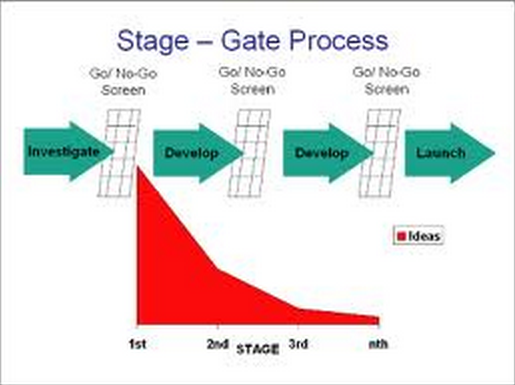
Why are pivoting and failing fast a failed innovation strategy ? This is a question I touched upon during my last discussion with Tony Ulwick.
I/ Companies use an innovation process which is failed

68% of Fortune 500 companies use the stage gate process as their sole innovation process. The stage gate process includes, but is not limited to, the following steps:
- Collecting ideas
- Scoping down ideas
- Creating a business case with projected revenues
But the stage gate process is failed, according to Tony Ulwick.
The stage gate process starts with an idea and ends with an idea. How can the process input and the process output be an idea? How can the process start with an idea and conclude with an idea? This doesn’t a make a lot of sense even from a process standpoint.
II/ Companies fail at innovation

So, companies start out with ideas. Companies have plenty of ideas. In fact, many companies complain they have too many ideas. So they try to scope ideas down. And then they do business plans and calculate projected revenues. But most of time, this is not based on any serious kind of information. Companies are just guessing. And then, when their ideas are validated, they are sent to development. At that time, companies start talking to consumers. They present their ideas to consumers and get feedback. They’ll change their prototypes based on consumer feedback. And then, they launch their projects but there’s only 5% of them that succeed. This is obviously a low success rate.
III/ Companies say they are pivoting and failing fast to hide their inability to succeed at innovation

Companies refer to concepts such as « failing fast » and « pivoting » to hide the fact that they are unsuccessful at innovation. Pivoting is the ability to manœuvre very quickly during the development phase, when companies realize that their product is not going the right way. Pivoting helps companies re-direct their product in the right way.
But, what companies are doing when they are « pivoting » is that they are learning as they go. They seem to have no direction, no real intention. They are just guessing. And this is expensive because they are burning through development dollars trying to figure what to do.
Some people call « pivoting » a strategy. But Anthony Ulwick believes « pivoting » and « failing fast » are nonsense. They are used as an excuse for explaining repeated failures. « Pivoting » and « failing fast » are not a reasonable strategy. They are just an excuse. If people say they are good at « pivoting », then, they are revealing that they don’t know what their product has to do in order to address customer needs. They are guessing at it as they go.
So what does a compelling innovation strategy look like? This is a question I addressed in a follow-up conversation with Anthony.
Further readings :
- For another take on « pivoting », « lean Start-Up » and « failing fast », please refer to this HBR blog post
- For another view on the stage gate process and it must be realize corporate strategy, please refer to this blog post
- For another explanation on why succeeding at innovation is challenging, please refer here
[…] Pour une discussion sur l’intérêt du pivot dans la stratégie d’innovation avec Tony Ulwick, CEO de Strategyn, lire ce billet. […]